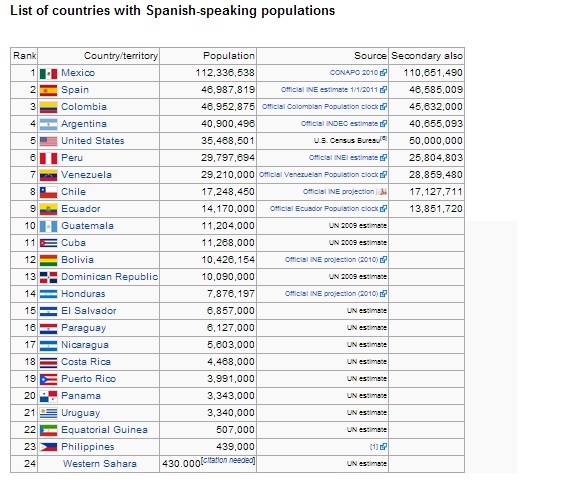The Spanish language is one of the five most widely spoken of the Romance languages, ahead of Portuguese, French, Italian and Romanian. While these five are the most common, some experts have listed the actual number of existing Romance languages as nearly 25, although this estimate may be on the low side. The Romance languages were born of Latin, developed between the sixth and ninth centuries, and belong to the Indo-European language family.
There are two commonly used versions of Spanish often used for translation: Latin American Spanish and European Spanish, also known as American Spanish and Peninsular Spanish. As is the case with British English and American English, differences between the two languages exist and should be considered when translating documents.
Latin American Spanish is spoken throughout Central and South America. More than 20 countries, including Venezuela, Mexico and Colombia, all list Spanish as their official language. Latin American Spanish can be understood throughout different Latin American countries because it retains a level of neutrality that makes it an attractive option to use for translations.
Hispanics living in the United States also speak this variety of Spanish (Miami included!). Sometimes users will mix in English and Spanish, forming a new kind of dialect which speakers call “Spanglish,” in a process that linguists refer to as code-switching. At any rate, Latin American Spanish is understood by members of the Hispanic community in the United States, Central America and South America and should thus be used by companies looking to tap into this market.
European Spanish, on the other hand, is primarily used in one country, Spain. Spanish originated in the Castile region of Spain and is sometimes referred to as Castilian or castellano. In some cases, Spanish is referred to as Español, although some natives are offended by this term as it was historically used by Francisco Franco to designate the language as one belonging to Spain, as opposed to other languages such as Galician, Basque and Catalan, spoken in certain regions of the country.
Aside from everyday words and slang, there are grammatical differences between Latin American and European Spanish. The most well-known difference is European Spanish’s use of the second person plural familiar vosotros, which is used as the informal plural form of tú, or “you.” Vosotros is very rarely used in Latin America, where ustedes is the commonly used verb tense. While many Spanish speakers are familiar with the term vosotros, when translating a document for a Hispanic market, it would be preferable to use the regularly used grammatical forms, especially since the intention of translation is to capture a distinct market, this is also known as localization. Hopefully this post provided a little insight into the progression of Spanish, and the major Spanish language differences.
If you have any questions or would like to know more about our Spanish translation services, click here to visit our Contact Page.




